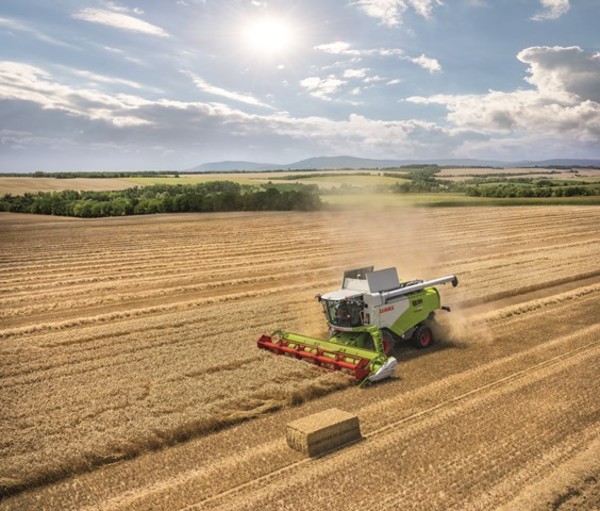
Claas combine harvesters and shredders, cutting edge solutions
News coming soon for the Tucano series combines, on display in Bologna with a significant technological renewal focused on productivity. News also for self-powered shredder loadeds, with the semi-tracked Jaguar 960 designed for maximum soil protection
With a range of 13 models (powers from 245 to 320 horsepower), the Tucano line combines arrive in Bologna with important updates. It starts from the CEBIS terminal, which can be used in combination with a newly designed armrest to allow the operator to intuitively control all the key functions of the machine. CEBIS can be operated either through a control knob or via touchscreen, while all the key functions of the combine harvester can be adjusted using the switches on the armrest. The Montana leveling system was also restyled, now available on five models of the series. “The device - explains Claas with a technical note - compensates lateral slopes from 16 to 18%. All functions are automatically performed in the field with the slope and cutting angle displayed in the CEBIS terminal”. The Montana models are equipped with a manual 2-speed gearbox with automatic adjustment of the driving unit; in both gears there are two transmission power fields selected according to the engine load; the machine automatically switches to the upper power range when a greater effort is required. On the new Montana combine harvester, the all-wheel drive axle offers up to 70% more traction power. The side leveling is available on the Tucano 580, 570 and 560 hybrids, on the six straw-walker Tucano 450 and the five six straw-walker Tucano 430. The strengths of the Tucano also include Auto Crop Flow technology, an assistance system that keeps monitors the number of revolutions of the threshing system, the system of separation of the residual grain, the straw chopper, and the engine, preventing blocks and overloads. This way, the machine can also be used by less experienced operators, without losing anything in terms of performance. The adjustments made by the Claas technicians have also affected the grain tank - now it has a maximum capacity of 11 thousand litres - while an automatic flap in the exhaust pipe prevents the residual flow of the product even when the pipe is full. At centre stage on the Claas stand, the Jaguar 960 Terra Trac self-propelled shredder, equipped with an integrated track system from the factory (the frame has been extended by one metre to house the tracks). “With this model, we aimed to set new standards for soil protection. Even when the crawler system is used with the narrower version (635 mm wide) - the manufacturer explains - the contact surface of over 1.3 m2 is more than double that provided by the 800-size tyres. In combination with the tyre pressure adjustment system, which is also available at the factory for the rear axle, the Jaguar 960 Terra Trac offers optimal soil protection”. The headland turning system, on the other hand, turns out to be very beneficial on grassy soil. During a steering manoeuvre, the support rollers of each track (which oscillate 10° upwards and 13° downwards) are pushed downwards; the front towing roller is raised and the contact surface is reduced by about a third. This prevents the turf from being damaged by the shear effect. Turning to the shredding system, the solution adopted by Claas involves the hydraulic drive of the head to improve the transmission of power at variable speeds. If the cutting length changes, the system adjusts the head speed to ensure uniform flow and consistent cutting quality. Finally, the Claas Auto Fill system for the side unloading minimizes losses during the shredding phase during the unloading process, and significantly reduces the workload of the operators of the forage transport convoy and the forage harvester. A high-resolution camera on the launch tube continuously monitors the contours of the forage transport carriage during the work and automatically adjusts the discharge direction of the forage according to the contours and the load situation.








